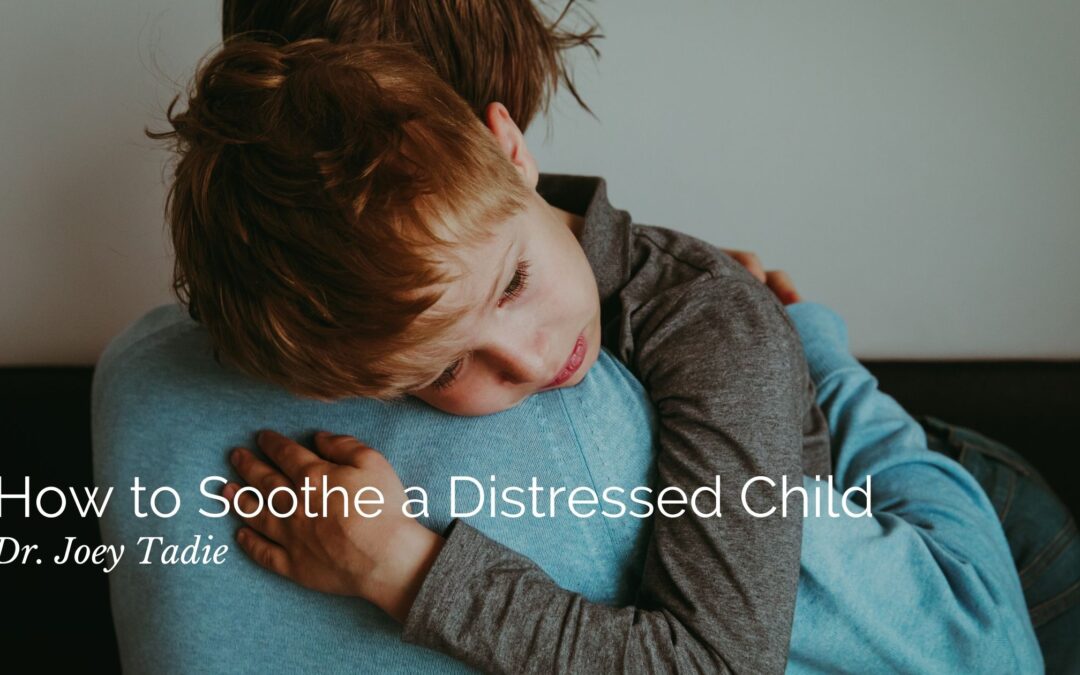There are few things more disheartening than watching your child suffer with a problem you know you can’t solve for them. You might have to watch your child go to the first day of kindergarten with their eyes wide with fear and tears. Perhaps you have to see them deal with peer rejection, a failed test at school, or even something as serious as the loss of a loved one, and now a pandemic and loss of normalcy. Life hurts sometimes. It hurts for everyone and there’s no getting away from it. Pain and distress are virtual guarantees even if they are a minority of our experience, thus, in order to make it through life we must also learn how to cope with challenges. As apparent as this might be for adults, we sometimes forget that children are still coming to grips with this reality.

Creating a strategy for coping can look different for everyone because we all have different needs, interests, preferences, and thresholds for stress. I will highlight some of the most basic and yet effective skills for relaxation and emotional endurance with the goal of showing application for both children and adults. Many of these techniques are useful to people of all ages and the modifiers I add are for guidance only. Use what works for you even if you find yourself using the child technique while your little one prefers the adult technique. This is by no means an exhaustive list, so feel free to build off of what you see here to create your best and personalized collection of techniques.
Basic Coping Strategies For Adults And Children:

Rocket Breath (Child): This breathing technique is similar to the one above, but I incorporate hand motions for children. Have your child place the palms of their hands together so it looks like they are praying, thus forming the “rocket ship.” Then, when they breath in, the child raises their pressed palms upward like a “rocket ship” as high as they can go. When exhaling, the child lowers their “rocket ship” hands back down. Repeat for at least one minute and do as often as needed to help induce relaxation, and add variations such as having the child pretend their breath is the sound of the “rocket engines.”
Exercise Channeling (Adult): Exercise can help give your pent up emotional energy someplace productive to go but you must ensure you do this safely. First and foremost I suggest choosing a workout that you will actually do. Exercise channeling works for weight training, cardio, or athletics but ideally you want to raise your heart rate and/or cause some burning in your muscles. As you do your workout, imagine your intense emotions as part of the energy you will be burning during your workout. Channel this emotional energy into your movements or muscles as you exercise. If you are angry, run angry. Anxious? Use that anxious jitteriness to do an extra rep or push yourself one minute longer during an endurance workout. Channel your emotions until you are physically exhausted and then enjoy the feelings of relaxation that come after the workout is over.

Daily Mindfulness (Adult): Many individuals say they don’t have enough time in the day for activities such as meditation. My suggestion is to integrate mindfulness into daily activities/obligations such as chores, eating, bathing, etc. While doing chores, change the nature of the activity by using your five senses to bring your focus to sensations that would otherwise go unnoticed. Notice the feeling of your hands dipping into the warm sink water while washing dishes. Notice the smell of the soap and the glistening of the bubbles in the soapy water. Pay attention the sounds of dishes clinking or water splashing. All of these sensations are going on while you complete the chore anyway and some might even be pleasant and relaxing. Another example is to use your five senses to take a mindful shower or eat a meal mindfully. Simply draw your attention to your senses and try to enjoy or at least “take in” the experiences your senses give you during an activity.
Mindful I Spy (Child): Children can utilize mindfulness as well, but they might need prompting or someone to participate in the process with them. The core activity is the same in terms of your child drawing attention to their five senses, but I make it into a game (I Spy). You and your child take turns pausing to notice a particular sensation during any number of activities. For instance, if you are taking walk you might notice a bird singing in a nearby tree. You announce “I spy a singing bird, can you spy it with me?” Your child then tries to see if they notice the same bird, and you are welcome to help them if they don’t see it at first. Another example would be using other senses such as hearing (“I hear wind in the trees, can you hear it with me?”). Take turns using each of your senses and inviting the other person to share the experience you notice. The key is to always pause and spend a few seconds taking in the sensation being identified instead of rushing off to name another sensation. Remember, the goal is to try to slow things down for the child to facilitate relaxation and emotional settling.

My Happy Place (Child): This version of visualization is more geared for children, but the technique itself is largely unchanged. You child will also start with deep breathing and then they imagine their own version of the Peaceful Place, but I call this “My Happy Place” so the child feels ownership of their visualization. You might introduce this activity to your child by saying “What is the happiest and most wonderful place you can imagine, even if it’s make believe?” I have had children create scenes such as fantasy castles filled with stuffed animals, flower gardens with butterflies, or even their own bed with toys and books. The point is to have fun creating the picture of the Happy Place and then teaching your child to imagine what else is in there using all of their five senses. Children usually love to use imagination so this can be quite an enjoyable activity for them.

Photo Credits:
Photo by Arwan Sutanto on Unsplash
Photo by Motoki Tonn on Unsplash
Photo by Nathan Dumlao on Unsplash
Photo by Andrew Montgomery on Unsplash
Photo by Caroline Hernandez on Unsplash



